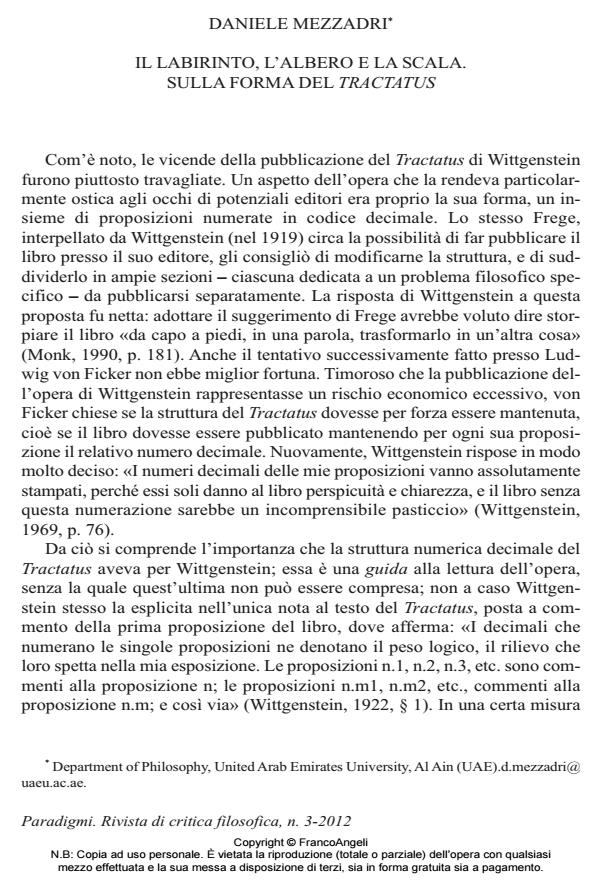The Maze, the Tree and the Ladder. On the Form of Wittgenstein’s Tractatus
Journal title PARADIGMI
Author/s Daniele Mezzadri
Publishing Year 2012 Issue 2012/3
Language Italian Pages 16 P. 175-190 File size 125 KB
DOI 10.3280/PARA2012-003010
DOI is like a bar code for intellectual property: to have more infomation
click here
Below, you can see the article first page
If you want to buy this article in PDF format, you can do it, following the instructions to buy download credits

FrancoAngeli is member of Publishers International Linking Association, Inc (PILA), a not-for-profit association which run the CrossRef service enabling links to and from online scholarly content.
This paper presents and discusses some recent interpretations of the form of Wittgenstein’s Tractatus. Borutti (2010) interprets the Tractatus as a sort of maze, where all propositions - far from leading to a single conclusion - represent different paths and (intersecting) ways of elucidating the essence of language and reality. Bazzocchi (2010), by contrast, describes the Tractatus as having a tree-like structure, its main propositions being the roots of the tree and the decimal ones branches and leaves, different levels of comment on the main propositions. On the view advocated by Diamond and Conant (2010), the Tractatus has a ladder structure (where its propositions are rungs) through which it guides its reader to get rid of philosophical confusions. The paper finally briefly discusses how these readings deal with the question of Tractarian nonsense.
Keywords: Ladder, Maze, Nonsense, Tractatus, Tree, Wittgenstein
- The Tree-reading of the Tractatus logico-philosophicus and the recent Debate on it Luciano Bazzocchi, in RIVISTA DI STORIA DELLA FILOSOFIA 2/2021 pp.319
DOI: 10.3280/SF2021-002006
Daniele Mezzadri, Il labirinto, l’albero e la scala. Sulla forma del Tractatus in "PARADIGMI" 3/2012, pp 175-190, DOI: 10.3280/PARA2012-003010